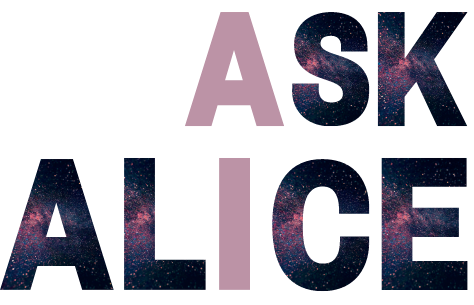Leverage AI writing assistants like ChatGPT or Claude to brainstorm essay topics, outline research papers, and refine your arguments—but always add your own critical thinking and verify facts before submitting. AI is transforming education at every level, creating both unprecedented opportunities and new responsibilities for learners.
Use AI-powered study tools such as Quizlet’s AI tutor or Khan Academy’s Khanmigo to get personalized explanations of difficult concepts, generate practice questions tailored to your weak spots, and receive instant feedback that adapts to your learning pace. These tools work like having a patient tutor available 24/7, turning confusion into clarity through interactive dialogue.
Explore free online courses from platforms like Google’s AI Essentials, MIT OpenCourseWare, or fast.ai to understand how AI actually works—knowledge that will serve you regardless of your major. Learning AI fundamentals now positions you ahead of peers who only use these tools without understanding their capabilities and limitations.
Build practical AI skills through hands-on projects using beginner-friendly platforms like Teachable Machine or Scratch, where you can create image classifiers or chatbots without coding experience. Starting with these accessible tools demystifies AI and reveals it as a learnable skill rather than mysterious magic.
Whether you’re looking to ace your current classes with AI assistance or prepare for a future career in this explosive field, understanding AI as both tool and subject gives you a competitive edge in an increasingly automated world.
What AI Actually Means for Students (No Tech Degree Required)
You’ve probably been using artificial intelligence for years without even realizing it. Remember when you typed “wrng” on your phone and it magically changed to “wrong”? That’s AI. When Netflix somehow knows you’d love that new sci-fi series? AI again. When Spotify creates a playlist that feels like it was made just for you? You guessed it—artificial intelligence at work.
Here’s the truth: AI isn’t some mysterious technology that only computer science majors can understand. Think of it as a really smart assistant that learns from patterns and experiences, much like you do when studying for exams. The difference? AI processes information incredibly fast and can spot patterns humans might miss.
At its core, AI is software that learns to make decisions or predictions based on data. When you search Google, AI helps find the most relevant results. When your email filters out spam, that’s AI protecting your inbox. Even those suggested responses in your messaging apps (“Sounds good!” or “Thanks!”) come from AI learning how people typically respond.
For students, this means AI isn’t something to fear or feel intimidated by. You don’t need to code or understand complex algorithms to benefit from it. Just like you don’t need to know how a car engine works to drive, you don’t need a tech degree to use AI tools effectively.
The exciting part? AI tools designed specifically for students can now help with research, writing, study planning, and learning new concepts. These aren’t replacement tools that do your work for you—they’re more like having a study buddy available 24/7, ready to explain difficult topics, organize your thoughts, or help you brainstorm ideas when you’re stuck.

AI Tools That Make Studying Less Painful

Smart Note-Taking and Summarization
Gone are the days of frantically scribbling notes while your professor speeds through slides. AI-powered note-taking tools are transforming how students capture and process information during lectures and study sessions.
Tools like Otter.ai and Notion AI can transcribe live lectures in real-time, creating searchable text you can review later. Sarah, a biology major at UC Berkeley, uses these tools to focus on understanding concepts during class rather than worrying about missing important details. “I can actually participate in discussions now instead of just writing everything down,” she explains.
For tackling dense textbooks and research papers, AI summarization tools like ChatGPT, Claude, and Scholarcy extract key points in seconds. Instead of spending hours reading a 50-page chapter, you can get a concise summary highlighting the main arguments, then dive deeper into sections that matter most for your assignment. Engineering student Marcus from Georgia Tech uses AI to summarize technical papers for his projects: “It helps me quickly determine which sources are worth reading fully.”
These tools also excel at identifying and organizing key concepts. You can upload lecture recordings or PDF textbooks, and the AI will generate bulleted summaries, create flashcards, or even explain difficult concepts in simpler terms. This is particularly valuable when reviewing for exams or writing research papers.
The real power comes from using AI as a learning partner, not a replacement for engagement. Review and annotate the AI-generated notes, adding your own insights and questions to deepen understanding and retention.
Personalized Learning Assistants
Imagine having a patient tutor available 24/7 who knows exactly where you’re struggling and adjusts their teaching style to match your pace. That’s the power of AI tutoring platforms that are transforming how students learn today.
These intelligent systems work like digital coaches that get to know you over time. When you solve math problems or practice vocabulary, the AI analyzes your responses to pinpoint specific areas where you need extra support. Struggling with fractions but sailing through algebra? The system notices and generates more fraction exercises tailored to your difficulty level.
Popular platforms like Khan Academy’s Khanmigo and Duolingo use sophisticated algorithms to create personalized learning paths. If you consistently miss questions about photosynthesis, the AI doesn’t just move on—it breaks down the concept into smaller chunks and presents it in different ways until you grasp it. For language learners, these tools adjust conversation complexity based on your vocabulary level and grammar mastery.
The real advantage lies in the immediate feedback loop. Traditional homework might take days to get graded, but AI tutors provide instant explanations when you make mistakes, helping you understand errors while the material is fresh in your mind. They also celebrate your progress, building confidence as you advance through increasingly challenging material at your own comfortable speed, without the pressure of keeping up with an entire classroom.
Research and Writing Support
AI writing assistants have become valuable study companions when used responsibly. These tools excel at helping you overcome writer’s block by generating topic ideas and creating essay outlines that you can personalize with your own research and voice. Think of them as collaborative partners rather than shortcuts—they can suggest different ways to structure your arguments or help you find the right words when you’re stuck.
Grammar checking has evolved beyond simple spell-check. Modern AI tools like Grammarly and ProWritingAid catch contextual errors, suggest style improvements, and help you maintain consistent tone throughout your papers. They serve as 24/7 writing tutors, explaining why certain corrections matter and helping you learn from your mistakes.
For research, AI-powered search tools can quickly scan academic databases and suggest credible sources relevant to your topic. Tools like Elicit and Semantic Scholar help you discover peer-reviewed articles and understand complex research papers more easily.
However, maintaining academic integrity is crucial. Use AI to enhance your work, not replace your thinking. Always fact-check AI-generated information, cite sources properly, and ensure the final work reflects your own understanding and analysis. Many schools have specific guidelines about AI use, so familiarize yourself with your institution’s policies before incorporating these tools into your workflow.
Learning About AI Will Future-Proof Your Career
The job market is transforming faster than ever, and AI sits at the center of this change. By learning about artificial intelligence now, you’re not just picking up another skill—you’re building a foundation that will remain valuable regardless of which career path you choose.
Consider these numbers: The World Economic Forum predicts that AI will create 97 million new jobs by 2025, while McKinsey estimates that AI could contribute $13 trillion to the global economy by 2030. These aren’t just statistics about tech companies. Healthcare providers use AI to diagnose diseases earlier. Marketing teams rely on AI to understand customer behavior. Even creative fields like graphic design and music production now integrate AI tools into their workflows.
Here’s what makes AI knowledge so powerful: it’s becoming a cross-functional skill, much like how computer literacy became essential in the 1990s. A doctor who understands AI can better collaborate with tech teams developing diagnostic tools. A journalist who grasps AI concepts can investigate algorithmic bias stories. A business graduate with AI knowledge stands out when companies seek employees who can bridge the gap between technical and strategic teams.
The career advantage goes beyond getting hired. LinkedIn’s 2023 Jobs on the Rise report shows that AI-related positions offer 25-30 percent higher salaries than comparable non-AI roles. More importantly, professionals with AI literacy tend to adapt better when their industries evolve, because they understand the technology reshaping their fields.
You don’t need to become a programmer or data scientist to benefit from this knowledge. Understanding how AI works, its capabilities, and its limitations makes you a more informed professional in any domain. Think of it as learning to read: you don’t need to be an author to benefit from literacy.
The students who grasp AI fundamentals today will become the leaders, innovators, and decision-makers of tomorrow—equipped with insights their peers might spend years catching up on. That competitive edge starts with curiosity and a willingness to explore this transformative technology now.

Free Resources to Start Your AI Learning Journey
Interactive Online Courses for Beginners
Getting started with AI doesn’t require a computer science degree or advanced math skills. Several beginner-friendly platforms offer interactive online courses designed specifically for newcomers to the field.
Coursera’s “AI For Everyone” by Andrew Ng is perfect for absolute beginners, requiring no coding experience. In just 4-6 hours spread over two weeks, you’ll understand what AI can and cannot do, discover real-world applications, and learn how AI projects work. The course uses visual explanations and relatable examples from healthcare, education, and entertainment.
Google’s “Elements of AI” combines bite-sized lessons with gamified exercises that make complex concepts like machine learning and neural networks surprisingly intuitive. Expect to invest about 30 hours over six weeks, with each module building naturally on the previous one. You’ll explore image recognition, recommendation systems, and chatbot technology through hands-on activities.
Khan Academy’s AI course introduces fundamental concepts through interactive coding challenges that guide you step-by-step. Students typically complete it in 10-15 hours, gaining practical understanding of how algorithms learn from data while creating simple AI projects they can immediately share with friends.
YouTube Channels That Make AI Click
YouTube offers a treasure trove of channels that break down AI concepts into digestible, engaging content perfect for student learners. Two Minute Papers delivers exactly what its name promises—quick dives into cutting-edge AI research with stunning visual demonstrations that make complex papers accessible. For those wanting deeper technical understanding, 3Blue1Brown uses mesmerizing animations to explain neural networks and machine learning mathematics in ways that finally make sense. Crash Course AI provides structured lessons with humor and clarity, ideal for beginners building foundational knowledge. StatQuest with Josh Starmer transforms intimidating statistics and machine learning concepts into memorable explanations through simple drawings and enthusiastic teaching. Meanwhile, Sentdex offers hands-on Python tutorials for AI projects you can actually build yourself. These channels transform AI from an abstract concept into something tangible and exciting, proving that learning about artificial intelligence doesn’t require a PhD—just curiosity and an internet connection.
Books That Won’t Put You to Sleep
Not every AI book reads like a textbook. For students wanting to understand AI without drowning in equations, several narrative-driven options make learning genuinely enjoyable. “The Alignment Problem” by Brian Christian reads like a detective story, exploring why teaching machines human values proves so tricky. It’s packed with real-world examples that stick with you long after finishing.
For something lighter, “Life 3.0” by Max Tegmark asks fascinating questions about AI’s future through thought experiments that feel more like sci-fi than science. Students appreciate how it connects abstract concepts to everyday concerns about jobs, relationships, and society.
“Artificial Intelligence: A Guide for Thinking Humans” by Melanie Mitchell delivers exactly what its title promises—clear explanations that respect your intelligence without assuming you’re a programmer. She uses humor and relatable examples to demystify machine learning.
These best AI books for beginners share one quality: they prioritize understanding over credentials, making complex ideas accessible through storytelling rather than formulas.
Hands-On Projects You Can Try This Weekend
Ready to get your hands dirty with AI? Here are beginner-friendly projects you can tackle this weekend. Start by training your own image classifier using Teachable Machine by Google—simply upload photos from your webcam, teach the AI to recognize different objects, and watch it learn in real-time. Next, try building a chatbot with ChatGPT’s custom instructions or explore Hugging Face Spaces to experiment with pre-built AI models for tasks like text generation, image creation, or sentiment analysis. For something creative, use RunwayML’s free tier to generate AI art or edit videos with smart tools. If you’re interested in data, Google Colab offers free Python notebooks where you can follow step-by-step tutorials for analyzing datasets or building simple prediction models—no installation required, everything runs in your browser. These projects take 1-3 hours each and provide real experience you can showcase in portfolios or college applications.
The Honest Truth About AI and Academic Integrity
Let’s address what everyone’s thinking but hesitant to ask: can you use AI for your homework? The short answer is yes, but with important boundaries that separate learning from cheating.
Think of AI as a study partner, not a replacement for your brain. Using ChatGPT to explain a difficult calculus concept you’re struggling with? That’s ethical and smart. Copying an AI-generated essay word-for-word and submitting it as your own? That crosses the line into academic dishonesty.
Here’s a practical framework to guide your choices. AI crosses into problematic territory when you’re submitting work that doesn’t reflect your own understanding or effort. If you couldn’t explain the ideas in your assignment to your professor, you’ve probably relied too heavily on AI assistance.
The ethical sweet spot involves using AI to enhance your learning process. Ask it to break down complex topics into simpler terms. Use it to generate practice problems or quiz yourself on material. Request feedback on your draft work to identify areas for improvement. These approaches strengthen your knowledge rather than bypassing the learning altogether.
Many schools are developing clear AI policies, so check your institution’s guidelines. When in doubt, be transparent with your instructors about your AI use. Most educators appreciate honesty and can help you understand appropriate boundaries for their specific assignments.
Remember, the goal of education isn’t just completing assignments but developing critical thinking skills and deep understanding. AI should amplify your learning journey, not replace it. When you use these tools to genuinely understand material better, you’re preparing yourself for a future where working alongside AI will be a valuable professional skill. That’s the difference between taking a shortcut and taking charge of your education.

Common Mistakes Students Make When Using AI
While AI tools offer tremendous support for learning, students often stumble into patterns that undermine their education. The most common trap? Treating AI as a magic answer machine rather than a learning assistant.
Many students copy AI-generated answers directly into assignments without understanding the content. This creates a dangerous illusion of knowledge—you might submit polished work, but you’re not actually learning the material. When exam time arrives or you need to apply concepts in real situations, those gaps become painfully obvious.
Another frequent mistake is accepting AI outputs without verification. AI tools can confidently present incorrect information, outdated facts, or oversimplified explanations. Always cross-check important details with reliable sources, especially for academic work. Think of AI as your study partner who’s helpful but occasionally gets things wrong, not as an infallible expert.
Students also miss opportunities for deeper learning by relying on AI too early in the problem-solving process. Before asking AI for help, struggle with the problem yourself for at least 10-15 minutes. This initial effort strengthens your critical thinking skills and helps you better understand the AI’s explanation when you do consult it.
To avoid these potential downsides of AI, follow the 70-30 rule: spend 70% of your time learning and thinking independently, and use AI for the remaining 30% to enhance, clarify, or expand your understanding. Use AI to explain concepts you’ve attempted to learn, generate practice problems, or provide alternative perspectives—not to bypass the learning process entirely.
As we’ve explored throughout this article, artificial intelligence isn’t here to replace your thinking, creativity, or hard work as a student. Instead, it’s a powerful companion that can handle the tedious parts of learning, help you understand difficult concepts faster, and give you more time to focus on what really matters: deep understanding and creative problem-solving.
Think of AI tools as your study partner who never gets tired, your tutor who’s available at 3 AM before an exam, and your research assistant who can quickly find relevant information. But remember, these tools work best when you remain the one in control, asking questions, verifying answers, and thinking critically about the information you receive.
The beauty of this moment in history is that you’re not just learning to use AI; you’re part of the generation that will define how AI develops and gets used in the future. The ethical considerations, creative applications, and innovative solutions that emerge in the coming years will likely come from students who are learning about AI right now.
So here’s your challenge: pick just one tool or resource from this article and try it this week. Maybe it’s asking ChatGPT to explain a confusing topic, using Grammarly to polish an essay, or starting a beginner AI course. Start small, experiment thoughtfully, and pay attention to how it changes your learning experience.
The future of AI isn’t just something that will happen to you. It’s something you’ll help create.

